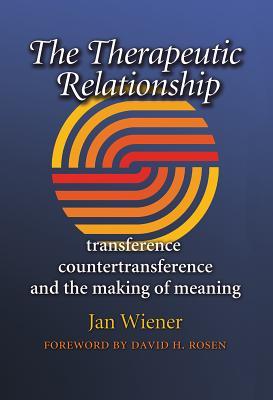While C. G. Jung had a natural intuitive understanding of the transference and countertransference, his lack of a "coherent method and clinical technique for working with transference and his ambivalence and mercurial attitude to matters of method," have, in the words of therapist and Jungian scholar Jan Wiener, sometimes left Jungians who are eager to hone their knowledge and skills in this area "floundering and confused."
Her aim in this important book is to lay the groundwork for the development of a "more contemporary Jungian approach" to working with transference and countertransference dynamics within the therapeutic relationship. Her work is also informed by knowledge from other fields, such as philosophy, infant development, neuroscience, and the arts.
In The Therapeutic Relationship, Wiener makes a central distinction between working "in" the transference and working "with" the transference, advocating a flexible approach that takes account of the different kinds of attachment patients can make to their therapists. She develops her own concept of the transference matrix, a model that honors one of Jung's core beliefs in the development of a symbolic capacity as an essential task of psychotherapy, but at the same time acknowledges that a capacity to symbolize can only emerge through relationship.
"This is a book that will be of great value to novice and experienced analysts alike as well as anyone interested in how Jungian analysts think and work today."-- Journal of Analytical Psychology
"A brilliant synopsis of transference, countertransference and the construction of meaning; a comprehensive, outstanding and very important Jungian contribution to the topic of the therapeutic relationship."--Verena Kast, author of Joy, Inspiration, and Hope
" . . . goes to the heart of clinical practice and its controversies while maintaining a clarity and ease of expression in traversing complex areas of experience . . . the reader is left both interested and enlivened . . . the clarity of the format and presentation will make it a useful teaching text."--British Journal of Psychotherapy
